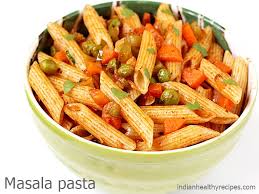The Art of Pasta: A Culinary Delight
Pasta, a beloved staple in cuisines around the world, holds a special place in the hearts and stomachs of many. This versatile dish, made from wheat flour and water, comes in various shapes and sizes, each offering a unique texture and flavor profile.
Originating from Italy, pasta has evolved into a global phenomenon, with countless variations and recipes to suit every taste preference. Whether it’s the comforting embrace of a bowl of spaghetti with marinara sauce or the sophistication of handmade ravioli filled with ricotta and spinach, pasta offers endless possibilities for culinary creativity.
One of the beauties of pasta lies in its simplicity. With just a few basic ingredients, skilled chefs can transform humble pasta dough into exquisite dishes that delight the senses. The process of making pasta by hand requires patience and precision, as each piece is carefully crafted to achieve the perfect texture and shape.
When it comes to sauce choices, the options are endless. From rich and creamy Alfredo sauce to zesty tomato-based sauces with fresh herbs, there’s a sauce for every pasta shape and occasion. The marriage of pasta and sauce creates a harmonious blend of flavors that is both comforting and indulgent.
Whether enjoyed as a quick weeknight meal or as the centerpiece of an elaborate dinner party, pasta has a way of bringing people together. The act of sharing a meal around a table laden with steaming bowls of pasta creates moments of connection and joy that transcend language barriers.
So next time you twirl your fork around a tangle of spaghetti or savor each bite of pillowy gnocchi, take a moment to appreciate the artistry behind this humble yet extraordinary dish. Pasta isn’t just food; it’s an experience that nourishes both body and soul.
Top 5 Frequently Asked Questions About Pasta: Cooking Times, Shapes, Storage, Sauces, and Gluten-Free Options
- How long should I cook pasta for?
- What are the different types of pasta shapes available?
- How do I store cooked and uncooked pasta properly?
- What are some popular pasta sauce recipes?
- Is pasta a good option for people with gluten intolerance?
How long should I cook pasta for?
Cooking pasta to the perfect al dente texture is a skill that can elevate any pasta dish. The ideal cooking time for pasta varies depending on the type and shape of pasta being used. Generally, most dried pasta needs to be cooked in boiling water for about 8-12 minutes to achieve al dente, which means it’s cooked through but still firm to the bite. It’s crucial to follow the instructions on the pasta package and taste-test a piece a minute or two before the recommended cooking time to ensure it’s cooked just right. Remember, practice makes perfect when it comes to mastering the art of cooking pasta!
What are the different types of pasta shapes available?
There is a wide array of pasta shapes available, each with its own unique characteristics and suitability for different dishes. From long and slender spaghetti to tube-shaped penne, and from curly fusilli to delicate angel hair, pasta shapes vary in size, texture, and ability to hold onto sauces. Some shapes are designed specifically for capturing chunky sauces, while others are better suited for lighter dressings. Whether you prefer the classic elegance of linguine or the playful spirals of rotini, exploring the diverse world of pasta shapes can add excitement and variety to your culinary repertoire.
How do I store cooked and uncooked pasta properly?
To ensure your pasta stays fresh and delicious, proper storage is key. Uncooked pasta should be stored in a cool, dry place away from moisture and heat to prevent it from becoming stale or absorbing odors. Keep it in its original packaging or an airtight container to maintain its quality. Cooked pasta should be drained well, tossed with a bit of olive oil to prevent sticking, and then stored in the refrigerator in a sealed container for up to three days. When reheating cooked pasta, consider adding a splash of water or sauce to revive its texture and flavors. By following these storage tips, you can enjoy perfect pasta dishes every time.
What are some popular pasta sauce recipes?
When it comes to popular pasta sauce recipes, the options are as diverse as they are delicious. From the classic marinara sauce, made with tomatoes, garlic, and herbs, to the creamy and indulgent Alfredo sauce, there is a sauce to suit every palate. Pesto sauce, with its vibrant blend of basil, pine nuts, and Parmesan cheese, offers a fresh and aromatic twist to pasta dishes. For those seeking a spicy kick, arrabbiata sauce with its fiery red pepper flakes is sure to tantalize taste buds. No matter your preference, exploring the world of pasta sauces opens up a world of culinary possibilities that are both comforting and exciting.
Is pasta a good option for people with gluten intolerance?
For individuals with gluten intolerance, pasta can be a challenging food choice due to its traditional wheat-based composition. However, there are now various gluten-free pasta options available on the market that cater to those with gluten sensitivities. These alternatives are typically made from ingredients like rice flour, quinoa, corn, or chickpeas, offering a suitable option for individuals looking to enjoy pasta without experiencing adverse reactions. It’s essential for individuals with gluten intolerance to carefully read labels and choose certified gluten-free pasta products to ensure they can still savor this beloved dish while maintaining their dietary restrictions.

